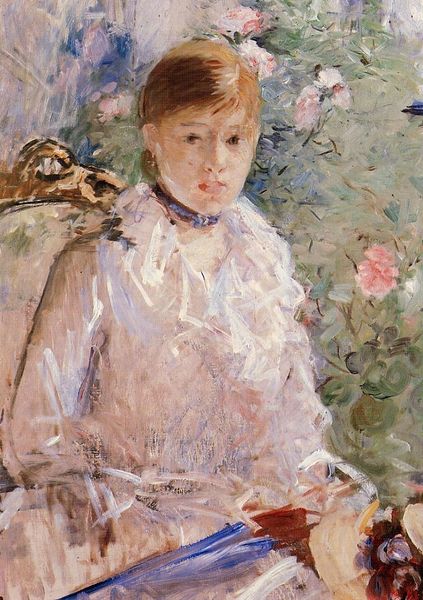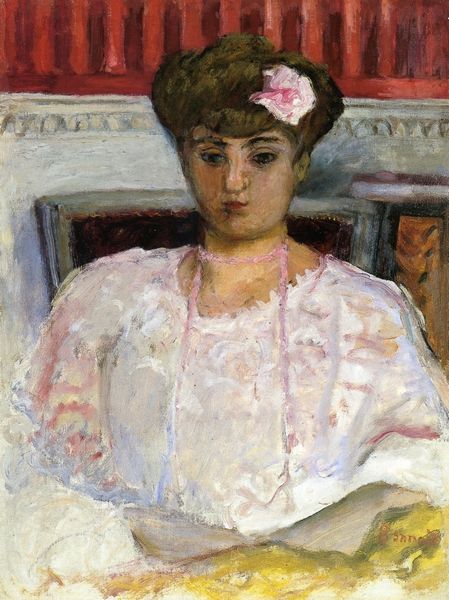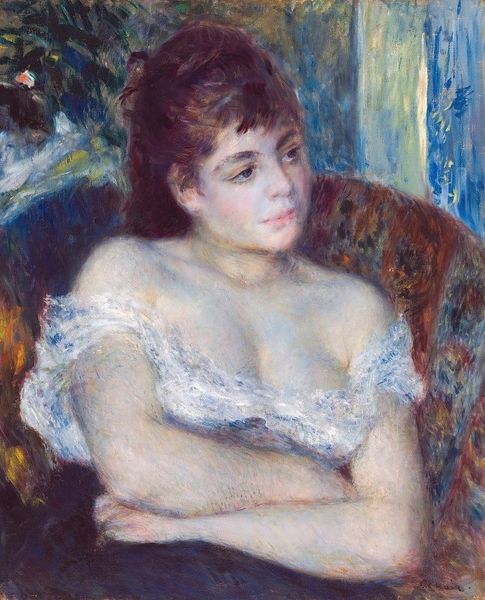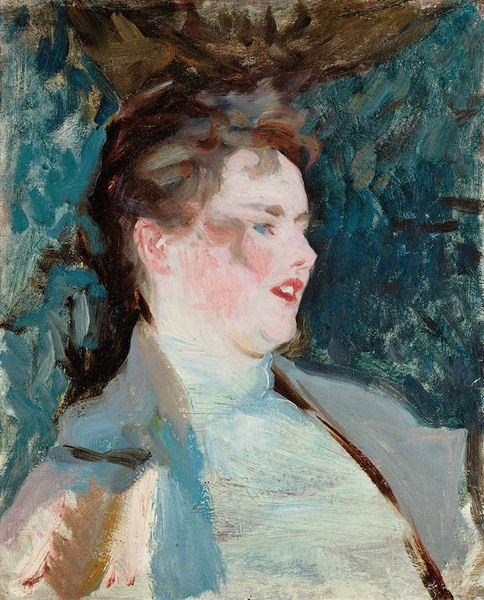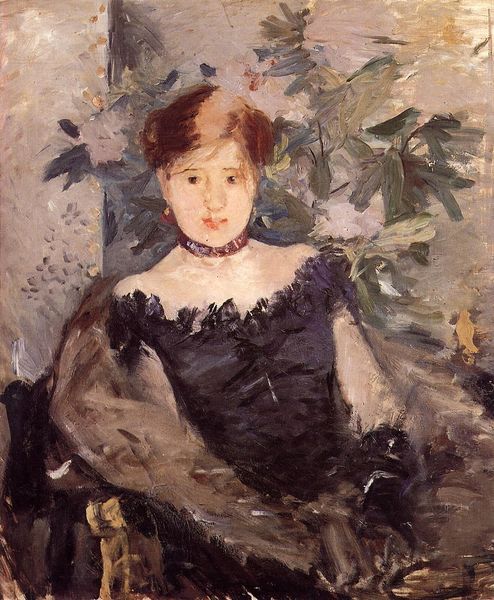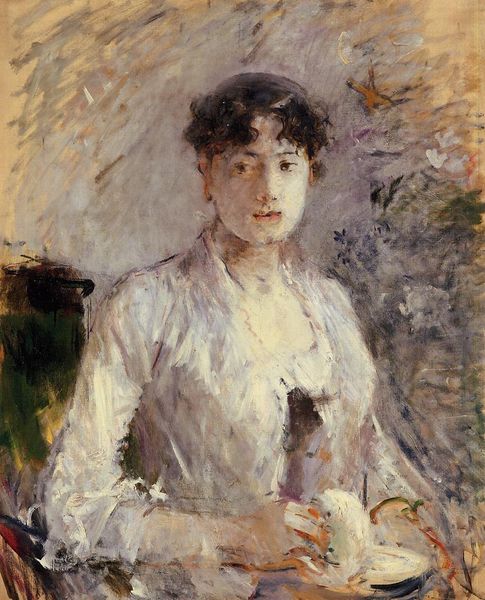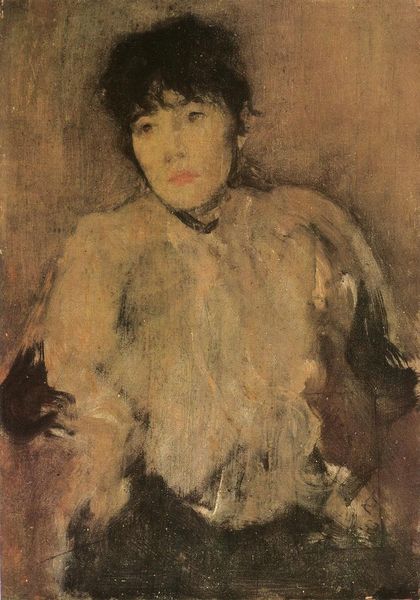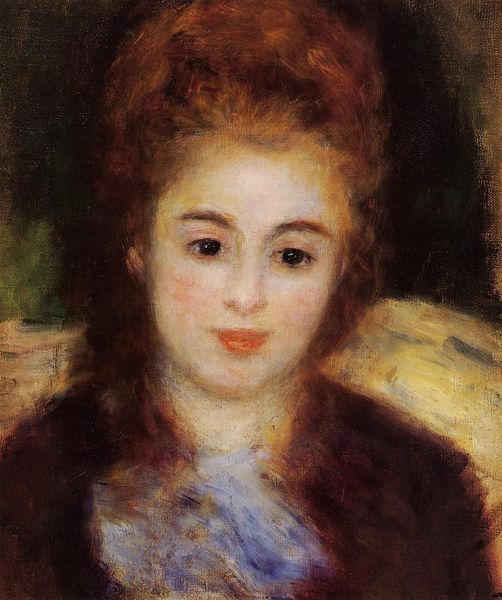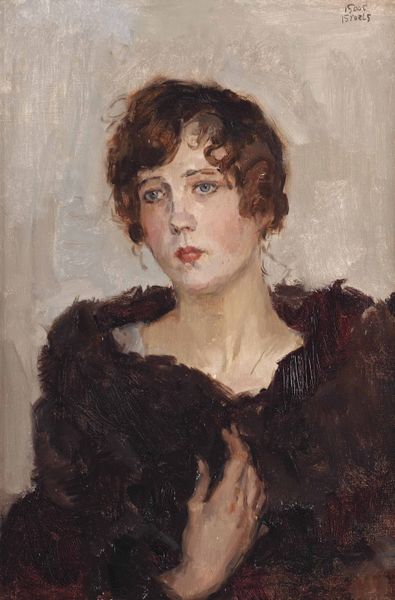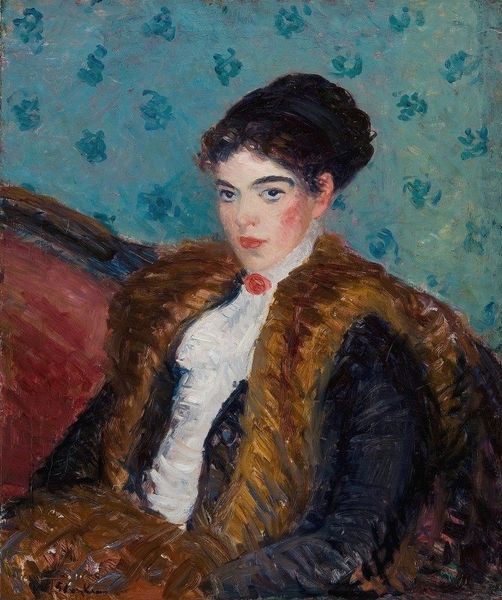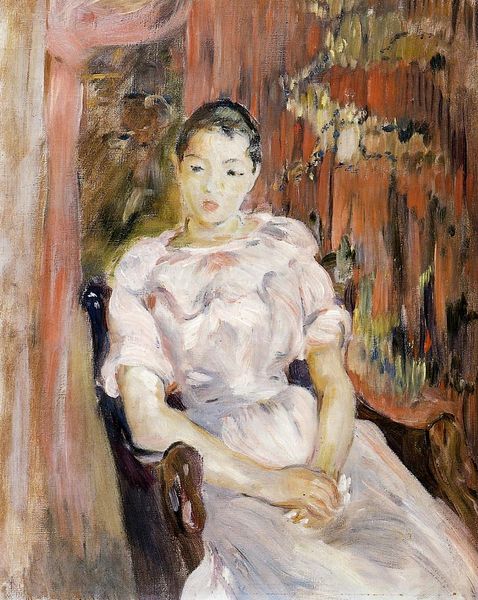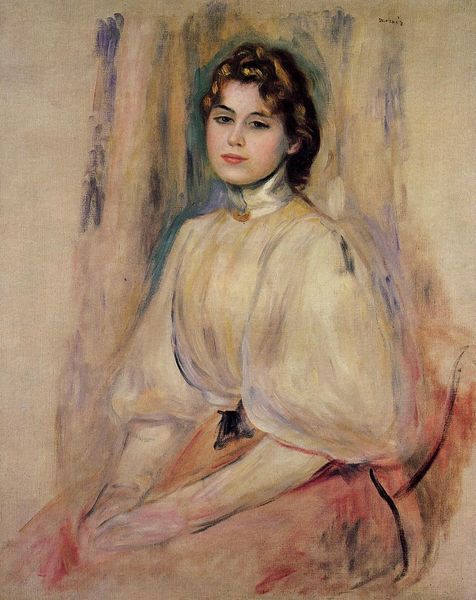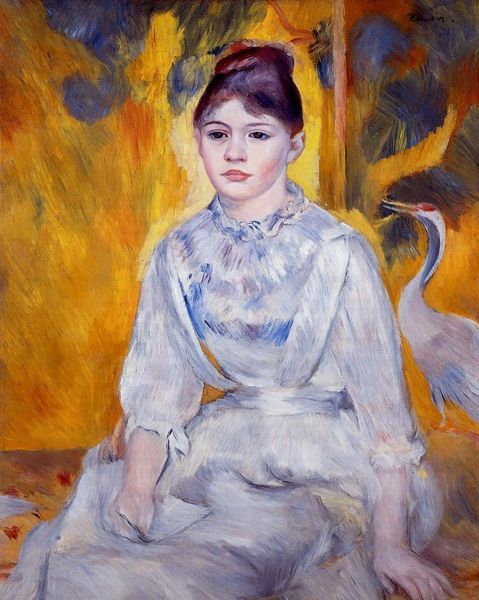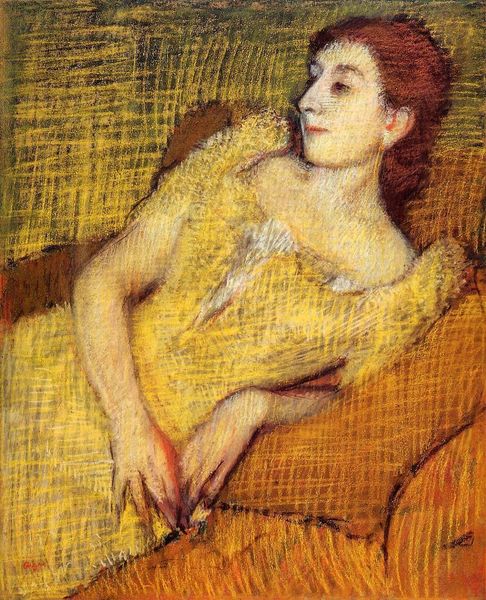
Copyright: Public domain
Curator: Berthe Morisot’s “Young Woman on a Couch,” painted around 1885, is currently housed here at the Tate Britain. Oil on canvas, of course. What strikes you about it at first glance? Editor: It's captivating, mostly because of the sitter's gaze, a delicate sort of directness. It hints at Romanticism with its introspective mood, but something in the loose brushwork is very much of its time, undeniably modern. Curator: Absolutely. That very brushwork is fascinating when we consider Morisot’s methods and materials. Notice how the quick, almost sketch-like strokes don't just depict, but they also embody a sense of transience. This echoes her frequent subjects, like domestic interiors and fashionable women - realities dependent on social structure and changing cultural attitudes toward labor and leisure. Editor: The dress, in particular, reads like ephemeral, something of lace, air and light. That speaks to more than just Impressionistic technique to me, and touches upon the symbolism of femininity in that era—delicate, ornamental even. The couch itself also is covered in abstract floral, implying wealth, domesticity. But do these icons feel empowering or restrictive here? Curator: It's complex, isn't it? Her gender profoundly shaped the kind of subject matter she had access to, certainly, as well as her critical reception. However, it would be overly reductive to suggest this framework determined how and what she depicted; her handling of paint, itself, challenges the norms of traditional representation. Editor: And those constraints may very well have focused her symbolic vocabulary; that almost photographic cutting-off of space reinforces the sense of an intimate, internal world being momentarily offered. The averted space hints at layers, histories unseen but not unfelt. Curator: That balance, walking the line between accepted tropes and material innovation, is key to understanding her lasting influence. Morisot elevated painting as a skilled and specialized practice in the history of 19th-century European women's artistic production. Editor: It's true, she harnesses cultural symbols not just to reiterate societal norms, but, arguably, to explore and perhaps even subvert them through her specific and conscious artistry. There’s a lingering unease and ambiguity within this image that continues to invite and provoke discussion. Curator: A wonderful synthesis to bear in mind as we move along to the next artwork. Thank you. Editor: Thank you. It has given me food for thought regarding Morisot’s work, its intricacies, and the questions it can pose today.
Comments
No comments
Be the first to comment and join the conversation on the ultimate creative platform.
